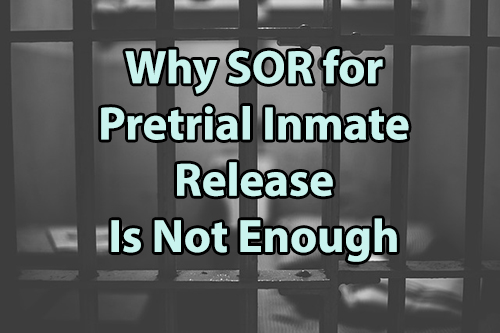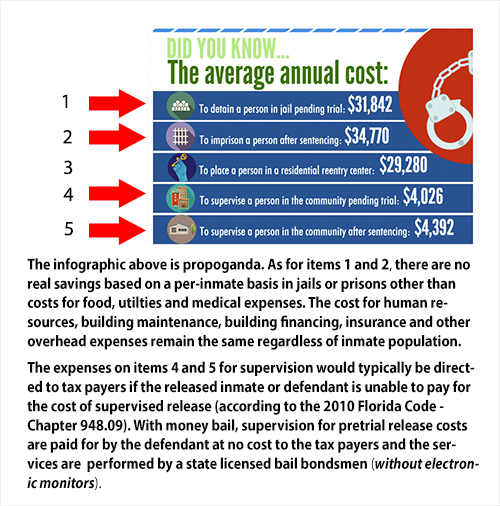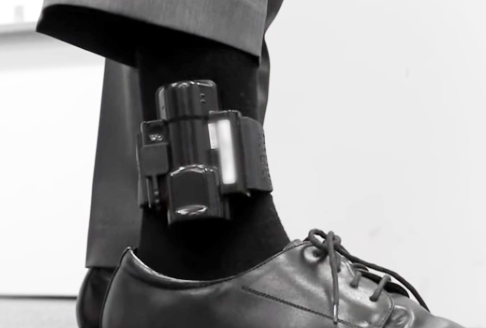
Many states around the country are striving for bail reform after New Jersey and New Mexico recently launched their new programs. And several other regions have reform in the works. The top priority for these advocates is to remove money bail from their criminal justice systems. But how safe is it to release questionable defendants without the obligation of cash bail? How does it work? And what does this new way of releasing inmates cost American citizens?
The Benefits of Supervised Release Programs
According to the Administrative Office of the U.S. Courts on behalf of the Federal Judiciary (USCourts.Gov), Supervised Released is the core responsibility of U.S. probation and pretrial officers, as well as the Criminal Investigation Division. The purpose is to monitor activities and behavior of inmates released back into the community and to provide an opportunity for offenders to get their lives back without endangering good citizens.
Supervised release is an alternative to being incarcerated (whether jail or prison) and (supposedly) saves money for the state and federal correctional institutions by reducing jail and prison populations. It also provides the opportunity for inmates to return to their families, get back to work and have a second chance to make things right.
Ways Supervised Release Improves the Judicial System
Supervision of pretrial defendants and ex-convicts helps to enforce court orders by assigning officers to keep a close eye on individuals released back into the community. The program also allows inmates with problems with addiction and other mental health problems to be released from a correctional institution and admitted instead into a treatment centers where they can heal, grow and eventually become a true asset to society.
Conditions Required Upon Supervised Release
In order to maintain their freedom on supervised release, pretrial defendants and released prisoners are restricted from traveling outside the area specified, owning (or having in their possession) guns or any type of weapon. Under NO circumstances should the person have ANY contact with victims, witnesses or anyone listed as OFF LIMITS within the court order. A curfew is also assigned, and MUST be abided by.
Community Service is also usually required to help introduce a quality work ethic within the person released, lead them to new skills, as well as keep them busy and out of trouble.
How Logical is Relying on Supervised Release for Low-Risk Pretrial Defendants?
Supervised Released Requires bodies to oversee defendants and ex-convicts. Bail reform initiatives are running rampant and states like New Jersey and New Mexico were confident that removing ‘money bail’ from their judicial systems was the ‘right thing to do’ in order to make getting released from jail as easy for the poor as it was for the rich. The problem with this type of reform is, when a majority of inmates are released based on the contingency that they will be ‘supervised’, who is going to do all of this supervising? And who will pay for it?
Right now, commercial bail bondsmen take on the brunt of this task for pretrial defendants and is NOT on the tax payers’ dime. However, the U.S. Courts claim the annual cost of detaining federal prisoners before trial and after sentencing is much higher than the cost of supervised release.
This infographic (also provided by the U.S. Courts) shows the average annual cost for detaining a prisoner and also the cost for supervised release. We’ve added details about their findings (see the red arrows – items 1 through 5).

Also, the U.S. Courts mention that ‘judges regularly weigh the costs associated with custody and supervision when determining the amount of fines to be imposed on an offender.”
The Cost for Pretrial Release Programs in Florida Between 2015 and 2017
Data collected from operating budgets in the state of Florida for twenty-nine unsecured pretrial release programs between 2015 and 2017 cost the state over $95 million. This research was conducted and released from the state of Florida Office of Program Policy Analysis and Government Accountability. This report also mentions that these unsecured pretrial release programs are completely paid for by Florida tax payers.
Another report released by The United States Courts in August of 2017 creates an illusion that supervised and pretrial release programs actually save states money by keeping defendants and low-risk criminals out of jails and prisons. However, the truth in the matter is that the cost for supervision exceeds the cost for incarceration.
The Annual Report from Florida Department of Corrections between June 1, 2016 and June 30, 2017 reported that a tally of 97,000 inmates were inside Florida correctional facilities and nearly 167,000 offenders were in community supervision programs.
What is the Truth About Pre-Trial Defendants ‘Languishing in Jails’ in Florida?
The assistant professor of criminology and criminal justice at The University of Tampa, David Krahl, did his own research to find out what’s really happening in Florida county jails as far as pretrial release. Krahl researched a random sample of more than 9300 inmates throughout Florida jails during a one-year period. The professor found that 56 percent of defendants who had been arrested were incarcerated for an average of one to three days. Two thirds of the inmates were incarcerated on average of one to seven days. According to Krahl’s study, the overall average stay in Florida county jails was two days.
The report also concluded that defendants who were released on unsecured pre-trial release spent much more time in pretrial detention than those who were released on a surety (bail) bond.
“The notion that large numbers of defendants are languishing away in jail simply because they cannot afford the cost of a surety bond to secure their pretrial release is sheer fiction,” stated Krahl.
WHO IS ELIGIBLE FOR PRE-TRIAL RELEASE?
Supervised Release Using Electronic Technology
Another way pretrial defendants and ex-prisoners are supervised upon release is with Location Monitoring. Electronic ankle monitors (GPS monitors) are attached to the released inmate to track his or her location at all times.
Court orders have different requirements. In some cases, the person being supervised is restricted from leaving the house entirely, but in other situations they are on a schedule allowing them to go to work, school, court ordered classes, etc. Some who are under supervision are not allowed to access various types of establishments (i.e. nightclubs, bars, etc.).

Problems with Relying on GPS Ankle Bracelets to Supervise Released Inmates
GPS ankle bracelets have been given a lot of credit for watching over released inmates. Yet, these devices have also caused some serious problems. One man who was on probation in Minnesota was arrested and taken back to jail numerous times due to the GPS ankle bracelet making false alerts. And although this man was never found out of place, he has been re-incarcerated repeatedly simply because the GPS device indicated otherwise. Many of times, he has been woken in the middle of the night by law enforcement. These mishaps have also taken away his ability to work a steady job.
How Safe is Substituting Money Bail for Supervised Release with Electronic Monitoring Alone?
As explained above, if these electronic monitors are indicating false alerts and causing those attached to them to be harassed and wrongfully incarcerated, the devices are not capable of protecting the community either. It’s obvious that relying on technology to alert supervised release officers about (possible) dangerous criminals’ whereabouts is not sufficient. Laws have been put in place in some areas to make it a felony charge for anyone legally obligated to GPS monitoring who fail to charge the device. Other efforts have been made to encourage more manufacturers to bid with better quality devices.
When Ankle Monitors Are Deliberately Removed
If the technicalities of electronic monitors were better perfected, still, pretrial defendants and released prisoners must be cooperative in keeping the device attached to the body. However, many on supervised release conditions remove the bracelets on purpose and there is no way for the supervising officer to know this within an adequate amount of time to protect victims and the community.
This video of a news report in North Carolina is an example of how dangerous relying on ankle monitors can be.
Supervised Release officers have voiced apprehensions about the difficulty in monitoring individuals using ankle bracelets and other electronic monitoring devices. Their main concerns have been that the process is extremely time consuming and often puts them at great risk of being harmed or even killed. Federal Supervised Release officers claim to have the responsibility of responding to or investigating three to four alerts per month PER PERSON. These officers are on-call 24/7, making this task even more difficult (especially if understaffed).
Ankle Monitors Cost Tax Payers
According to Justia.com in the 2010 Florida Code – TITLE XLVII CRIMINAL PROCEDURE AND CORRECTIONS CHAPTER 948 PROBATION AND COMMUNITY CONTROL 948.09 Payment for cost of supervision and rehabilitation “any person ordered by the court, the Department of Corrections, or the parole commission to be placed on probation, drug offender probation, community control, parole, control release, provisional release supervision, addiction recovery supervision, or conditional release supervision under chapter 944, chapter 945, chapter 947, chapter 948, or chapter 958, or in a pretrial intervention program, must, as a condition of any placement, pay the department a total sum of money equal to the total month or portion of a month of supervision times the court-ordered amount, but not to exceed the actual per diem cost of the supervision.”
The Florida Code explains that any cost for supervising an inmate upon release will be at the expense of the inmate. But, if you read this statute further, it also states that if the inmate is unable to pay for the expense of the electronic device, the cost will flow over to tax payers. The good citizens within the community will be responsible for the costs. Therefore, this experimental approach for monitoring dangerous criminals (that has not proven to work effectively) is being implemented routinely and often at the expense of the community. The same community that may be at risk for assaults, robbery or quite possibly – MURDER.
HOW IS BAIL DETERMINED IN FLORIDA?
How Money Bail Protects Communities
Without requiring monetary funds for inmate release, any type of follow up supervision becomes a liability for the community. Bail Bondsmen automatically supervise pre-trial release defendants from the moment a bond is issued until their scheduled court date. This helps to protect the community (again at no cost to the tax payer) and assures the magistrate’s court the defendant will appear in court as scheduled. Should the defendant flee, it is the responsibility of the bondsman to locate the individual – NOT LOCAL LAW ENFORCEMENT.
In addition to covering the cost of pretrial supervision, without requiring a surety bond for inmate release, a sense of sincerity is taken away from the seriousness of the accused offense. And with a primary focus on ‘poor people being discriminated against who can’t afford bail’ the original idea with money bail was to influence those who have been arrested to ‘NOT GET ARRESTED AGAIN’. If getting out of jail is a simple process without sacrificial consequences, what will deter rebellious individuals from breaking the law again?
Out of all of the types of inmate release, surety bonds have historically had the best rate of appearance by far. When the accused shows up for court, the alleged victim has their day in court at no cost to the tax payers.
When a family secures someone’s release using a surety bond, the insurance company has a list of questions that are asked in order to secure someone’s release. Bail agents want to make sure while this person is out of jail that the chances of recommitting a new crime or infringing on the alleged victim’s rights is minimized at no cost to the tax payers.
If a defendant is released on a surety bond and fails to appear in court, it is the agent’s obligation to apprehend the suspect and return the defendant to the proper jurisdiction of the court. Bail agents have a limited amount of time to find the suspect, usually before the 60th day mark at no cost to the tax payers.
How Bail Reform Has Already Failed
In states that have already implemented bail reform policies, regardless of what you have heard in the news or read in news articles, the policies aren’t working. New Jersey, Maryland and New Mexico have found out by experience.
Protecting American Citizens Requires Cash Bail
Bottom line, pretrial release is extremely expensive and a burden on the tax payers. There is no real savings of mass releasing pre-trial defendants and we are putting our productive citizens’ safety at risk by not properly managing the defendants release and assuring their appearance in court.
VIDEO: 2018 Florida Bar Criminal Justice Summit on Pretrial Release (with transcription)
VIDEO: The Role of Monetary Bail (with transcription)


 Serving all of Florida,
Serving all of Florida, 
Recent Comments